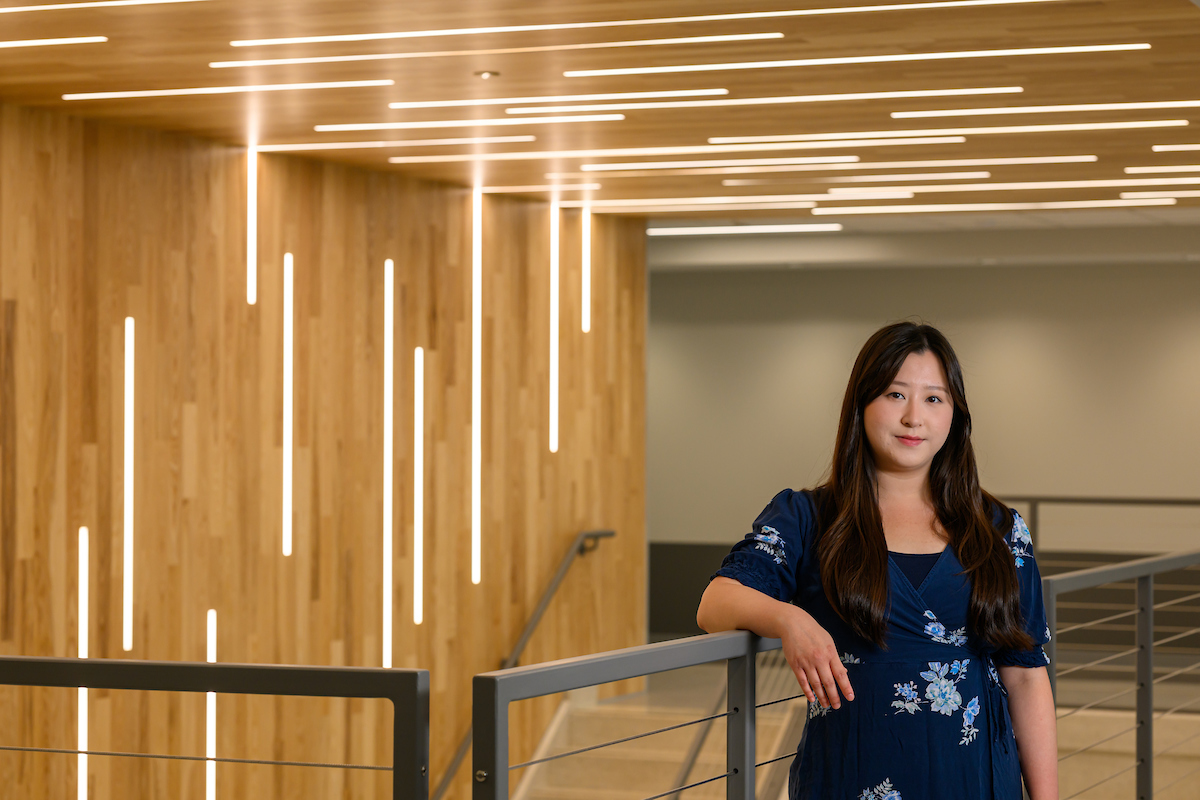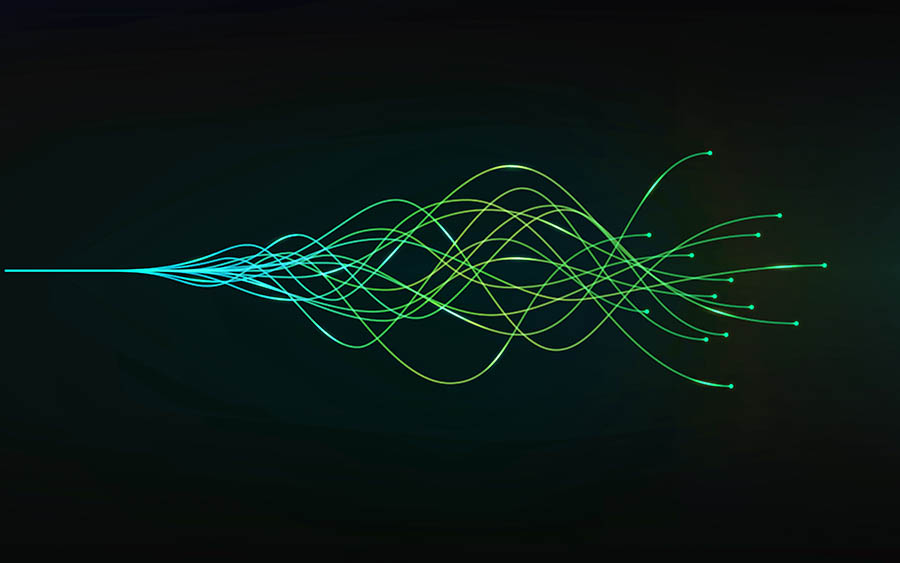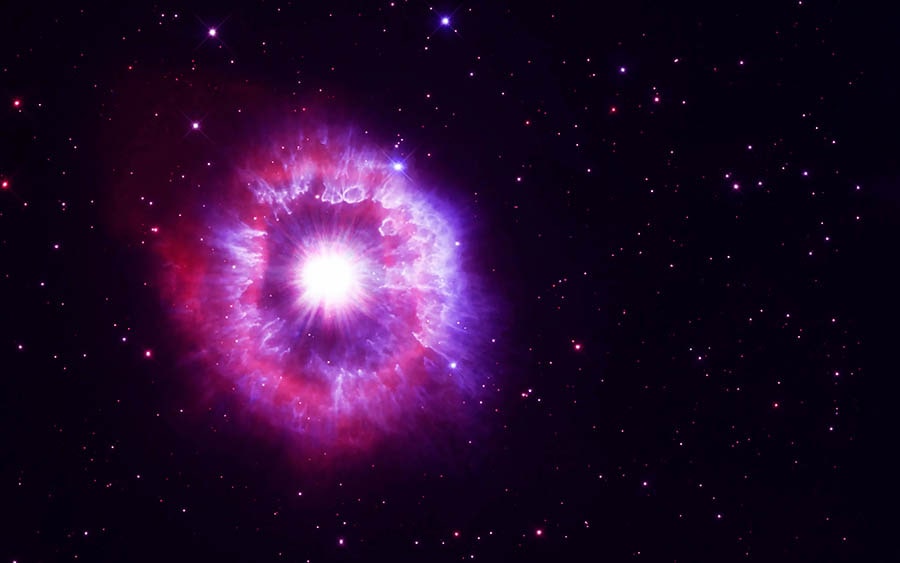
How AI is helping decode the complex world of quantum states
OHIO researcher Jane Kim, Ph.D., is using AI and neural networks to revolutionize quantum physics by accurately modeling quantum states, unlocking new insights into the universe's smallest particles.
August 20, 2024
Share:
To understand the universe at its most fundamental level, scientists are turning to a new ally—artificial intelligence. Neural networks, the same technology that recommends what you should watch next or helps your phone recognize your voice, are now making breakthroughs in one of the most challenging fields of science: quantum physics. At the heart of this exploration is the quest to model quantum states—complex representations that describe how particles behave at the tiniest scales of matter. By applying AI to these models, researchers are unraveling the mysteries of quantum systems and pushing the boundaries of what we thought was possible in nuclear physics.
In a recent paper , Jane Kim, Ph.D. , a physicist at Ohio University's College of Arts and Sciences , delves into how neural networks are being used to tackle some of the most perplexing problems in the field. Her work sheds light on how AI can help physicists create more accurate models of quantum states, potentially transforming our understanding of the universe's smallest building blocks. This integration of machine learning and quantum physics isn't just a theoretical exercise—it's a glimpse into the future of scientific discovery, where complex problems that once seemed unsolvable are now within our reach.
We asked Kim a few questions about her research and what led her to continue her work at OHIO.

'Suddenly, I had the tools to solve a wide variety of problems'
Q. How did you become interested in nuclear physics and machine learning?
My interest in nuclear physics began during my undergraduate studies when I started working on heavy ion collision simulations. These simulations offer insights into the quark-gluon plasma, an exotic phase of matter believed to have filled the early universe and recreated in droplets during these collisions. Through this experience, I learned to code, and suddenly, I had the tools to solve a wide variety of problems that were previously impossible with just pen and paper. This was extremely exciting to me, and I quickly became obsessed with computational methods in general.
Parallel to my exploration in nuclear physics, I developed an interest in machine learning. I was lucky enough to have a Ph.D. advisor, Morten Hjorth-Jensen, Ph.D., who was not only an expert in quantum many-body methods, but a dedicated mentor. He encouraged me to pursue any ideas that piqued my interest, and machine learning was one among many. What is great about machine learning is that it provides a powerful framework for solving optimization problems without the need for explicit programming of every detail. It has changed the way I approach and understand complex problems.
Q. How do you see the future of machine learning impacting the field of nuclear physics?
While machine learning already plays an integral role across physics, its importance is expected to grow significantly as it becomes essential for managing the vast amounts of data generated by experiments. For instance, following the recent activation of the Facility for Rare Isotope Beams , which anticipates doubling the number of observed isotopes, the demand for advanced data processing and analysis techniques will only increase. On the theoretical front, a significant challenge in nuclear physics involves constructing effective nucleon interactions that are both simple and predictive. My collaborators and I use machine learning to accurately solve these systems, which is crucial for assessing the quality of these interactions.
Machine learning, particularly deep learning, is a rapidly evolving field characterized by sudden bursts of progress. It will be interesting to see how advancements in machine learning over the next decade will permeate into physics applications and how physics problems can drive innovations in machine learning. Many of these impacts are yet to be fully understood or realized.
Q. Can you describe your research on using neural networks to represent quantum states?
Quantum states encode crucial information about a quantum system, making their calculation essential for extracting physical properties. Traditionally, calculating a quantum state requires a detailed initial guess of what the state looks like, which inherently biases the results based on our assumptions. This bias not only affects accuracy but also limits our ability to study other related systems effectively.
Neural networks offer a powerful solution to these challenges due to their flexibility and adaptability. Using neural networks, we can represent quantum states with minimal assumptions of the symmetries and boundary conditions, allowing for a more accurate and general representation of our wave function. Additionally, it is straightforward to incorporate or remove symmetries and boundary conditions, making our wave function more easily transferable to a wide variety of systems.
In practice, we begin by selecting a Hamiltonian that governs the interactions between all the particles in our system. We then train our neural-network quantum state by minimizing the system’s energy. During the training process, we sample numerous particle configurations to estimate the energy, iteratively adjusting the network’s parameters for optimal accuracy.

Small scale, big impact
Q. What are some of the most exciting discoveries you've made in your research so far?
Because neural-network quantum states are so general and flexible, we have found that they can naturally discover behaviors that would otherwise need to be baked into our calculations. For example, we have found that a single neural-network quantum state can model both normal and superfluid phases of neutron star matter in a unified way. In addition, we have successfully simulated nuclear matter at extremely low densities, a challenging task due to the clustering of nucleons in this regime. Finally, due to the scalability of neural networks, we anticipate being able to tackle increasingly larger systems in the near future.
Q. How do neural networks help solve the fermionic sign problem (a quantum physics challenge where calculating particle behavior is hard because their wave functions can cancel each other out)?
When simulating a fermionic system , the sign problem arises due to the antisymmetry of the wave function. Various quantum Monte Carlo methods encounter this problem to differing extents, depending on the specific conditions. In variational Monte Carlo, we mitigate the sign problem by sampling only from the square of the wave function, effectively eliminating the ambiguity between positive and negative regions.
However, before the use of neural networks, the results obtained with variational Monte Carlo were often poor compared to other quantum Monte Carlo methods. Neural networks have now increased the flexibility of variational Monte Carlo, making it competitive with these traditionally more accurate methods. In some cases, our calculations even surpass those of other methods, which often employ their own approximations that can bias results.
Q. What are the main challenges in calculating particle correlations, and how does your method address them?
In quantum systems, calculating particle correlations is challenging because each particle's state is entangled with the states of all the others, forming a collective quantum state. This complexity contrasts with classical systems, where collective equations can often be simplified into many independent ones.
To capture the interconnectedness of the quantum system, we model all the particle interactions simultaneously. This can be visualized as a fully-connected graph, where the vertices represent the particles and the edges represent all the possible interactions between pairs. Recently, we have employed graph neural networks to effectively capture these intricate interactions while maintaining the original structure of the graph.

Building quantum futures at OHIO
Q. What led you to Ohio University?
I was drawn to Ohio University because of its strong reputation in nuclear physics and close-knit research community. Having previously interacted with OU faculty and graduate students at various conferences, I saw it as a great environment to learn new things and start new collaborations.
Q. What do you enjoy most about working in a university setting?
One of the aspects I enjoy most about the university setting is being surrounded by passionate people at all different levels. I can not only learn a lot from the expert professors here, but also the brilliant students and my fellow postdocs. Their diverse insights and experiences challenge me to grow both academically and personally.
Q. What advice would you give to prospective students interested in pursuing a career in physics and machine learning?
I would emphasize the importance of presenting at conferences and networking. This approach not only helped me meet many of my collaborators and learn about Ohio University, but it also helped me stay informed about the latest developments in the field. I also believe it is important to explore disciplines beyond your primary subfield. This fosters deeper connections between concepts, sparks ideas, and allows you to make conversation with researchers from different backgrounds. Finally, I encourage anybody who is interested in machine learning to start exploring on your own. Since the field is so hot right now, there are many resources online that can help you get started.

